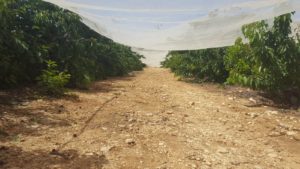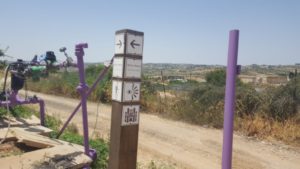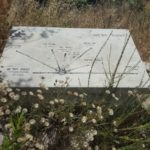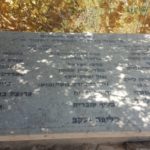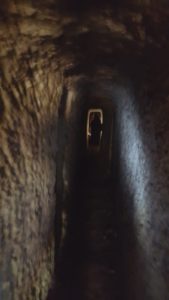Hi,
Atzva wish to go for a cherry self-picking, and I found one with a small tour guide I can joy 🙂. It was in Gush Etzion and the place was the Russian Monastery.
The place was used as a post defending Gush Etzion during Independence War. The Gush (bloc), which was a cluster of settlements south to Jerusalem, was abandoned the day before Israel Declaration of Independence due to the attack of the Royal Jordanian Army.
After Six Days war in 1967, the Gush was rebuilt and new settlements were added next to those built on the ruins of the abandoned places.
The Monastery was built on 1904 on the road from Jerusalem to Bethlehem, and used as an hostel for pilgrims. It sits on a hill 900m above sea level that separate the original Gush Etzion from the Jerusalem Bethlehem road (toady road 60) and therefore it was important strategic point: defending the settlements from the road and preventing forces to move North to Jerusalem.
On May 4th 1948 the Royal Jordanian Army attack the post and was hold back at the cost of dozen warriors. On May 12th, the post fell after another 17 warriors died defending it, separating the Gush. The day after Kafr Etzion fell – most of the warriors died defending it, and the fighters of the last 3 settlements sundered.
Take Care
Gad
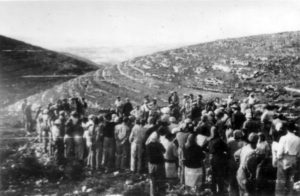 Gush Etzion gathering (Source: Kfar Etzion field school)
Gush Etzion gathering (Source: Kfar Etzion field school)
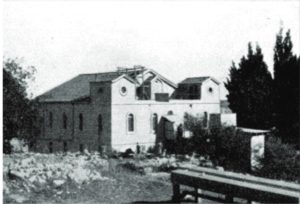 The Russian Monastery around 1938-1939 (Source: Hertzog)
The Russian Monastery around 1938-1939 (Source: Hertzog)
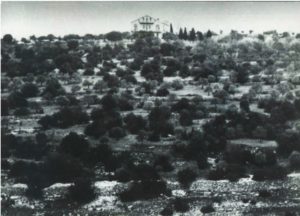 Russian Monastery from below (Source: Hertzog)
Russian Monastery from below (Source: Hertzog)
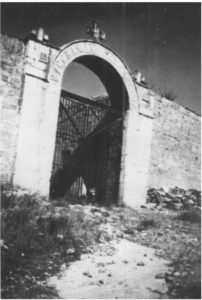 The Russian Monastery gate back on 1948 (Source: daniel ventura wikia)
The Russian Monastery gate back on 1948 (Source: daniel ventura wikia)
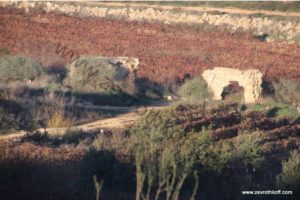 The ruins of the gate today (Source: zevrothkoff.com)
The ruins of the gate today (Source: zevrothkoff.com)
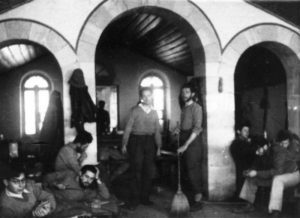 The fighters inside the Russian Monastery during Independence War (Source: Israel Hayom)
The fighters inside the Russian Monastery during Independence War (Source: Israel Hayom)
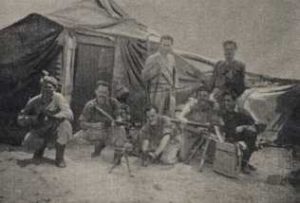 Recruits from Jerusalem on top of the hill during Independence War (Source: Gush Etzion Archive site)
Recruits from Jerusalem on top of the hill during Independence War (Source: Gush Etzion Archive site)
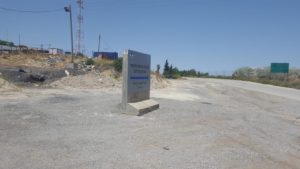 The entrance to IDF base on top of the hill
The entrance to IDF base on top of the hill
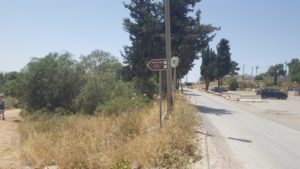 The road sign to the Russian Monastery
The road sign to the Russian Monastery
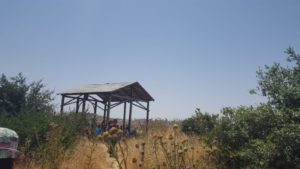 A shed resembling the Monastery location and a point of view
A shed resembling the Monastery location and a point of view
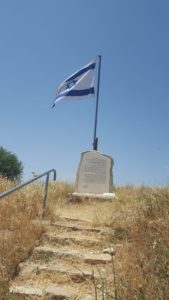 Memorial
Memorial
“On top of the hill sitting on the road between Jerusalem and Hebron, on the entrance to Gush Etzion, a Russian monastery was founded on 1904. On 1935 – 1937 settlers from El – HaHar company used to live in.
During independence war, the monastery was leased and used as a post. Its strategic location set its purpose: Defending the settlements of Gush Etzion and Defending Jerusalem by attacking the Enemy transpiration from Hebron to Jerusalem.
The brave resisting of the defenders the of post, till death, helped the forces in Jerusalem holding the city.
On May 4th 1948 the Royal Jordanian Army attack the Gush Etzion, most of the fight was on this post. Dozen fell, ten of them on and around the monastery. At night the defender retook the post. In the eulogy said the defenders commander: “What are we and what our lives, the most is the project we live in. We hit the enemy whenever we can, disturbing him from his purpose. Our answer is determined – Jerusalem forever”.
On May 12th, when the last fight in Gush Etzion started, the post was attached by Arab gangs and the Royal Jordanian Army. The post fell after a desperate fight. 17 warriors died defending it, among them Gus Etzion commander, Moshe Zilbermisht (Mosh) and the post commander, Tzvi Ben Yodef. With its fall the enemy penetrated the center of Gush Etzion. The day after, May 13th, Kfar Etzion fell and separating the Gush. The day after Gush Etzion fell – most of the warriors died defending it.
On May 14th, the day of Israel deceleration of Independence. the fighters of the last 3 settlements (Mashot Itzhak, Ein Tzurim and Revadim) sundered and were led to captivity. The Arab destroyed the Russian Monastery to its ground).
The signs near the memorial with the names of the fallen.
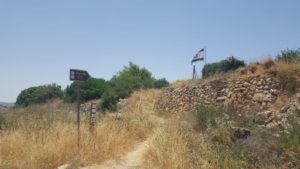 A sign and the flag over the memorial
A sign and the flag over the memorial
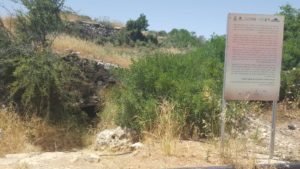 A monk cave, 30 meter long dug by the monk Lazar on base of old olive press.
A monk cave, 30 meter long dug by the monk Lazar on base of old olive press.
 Getting into the cave – Russian Monastery
Getting into the cave – Russian Monastery
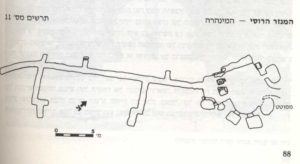 Map of the cave (Source: Gush Etzion Archive site)
Map of the cave (Source: Gush Etzion Archive site)
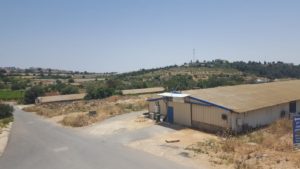 A look on the hill from Hummos Haaretz balcony
A look on the hill from Hummos Haaretz balcony

